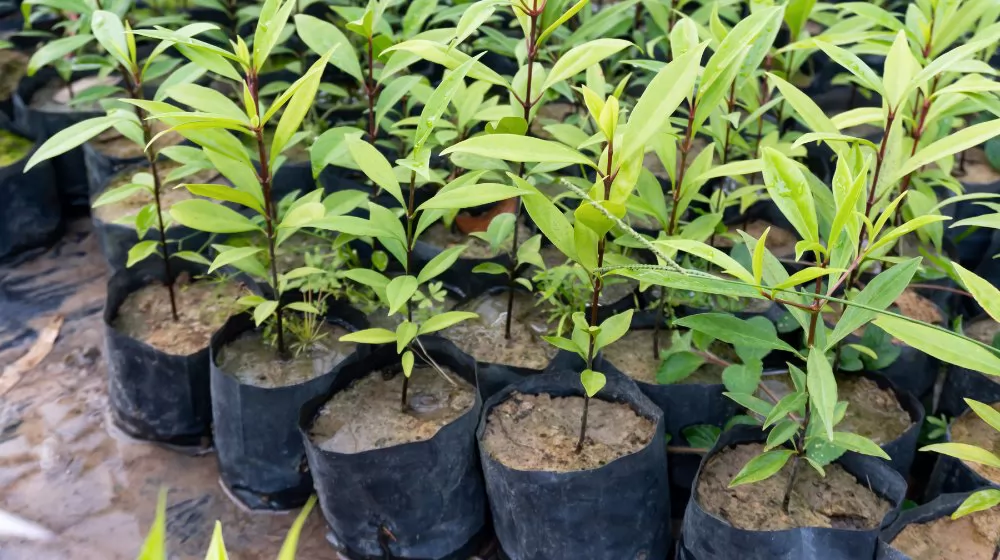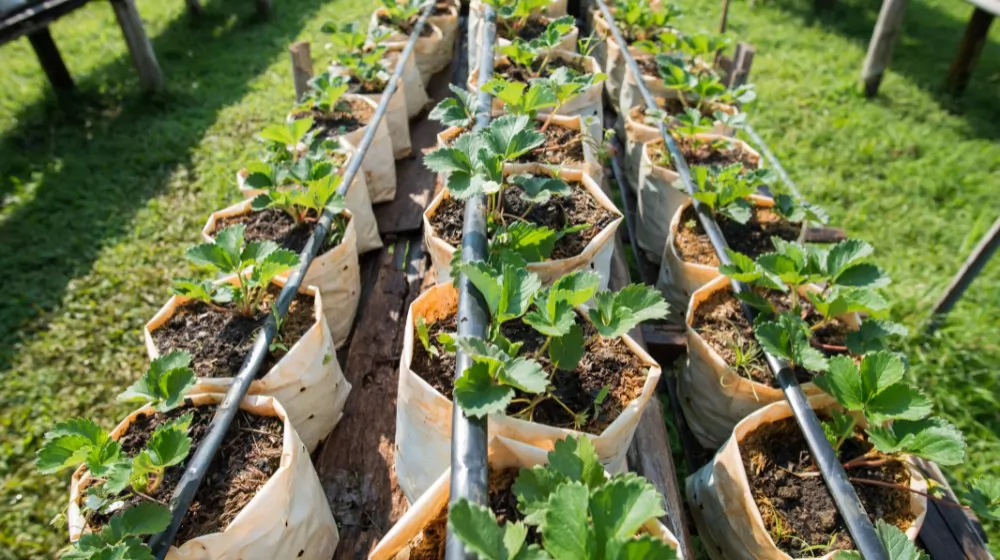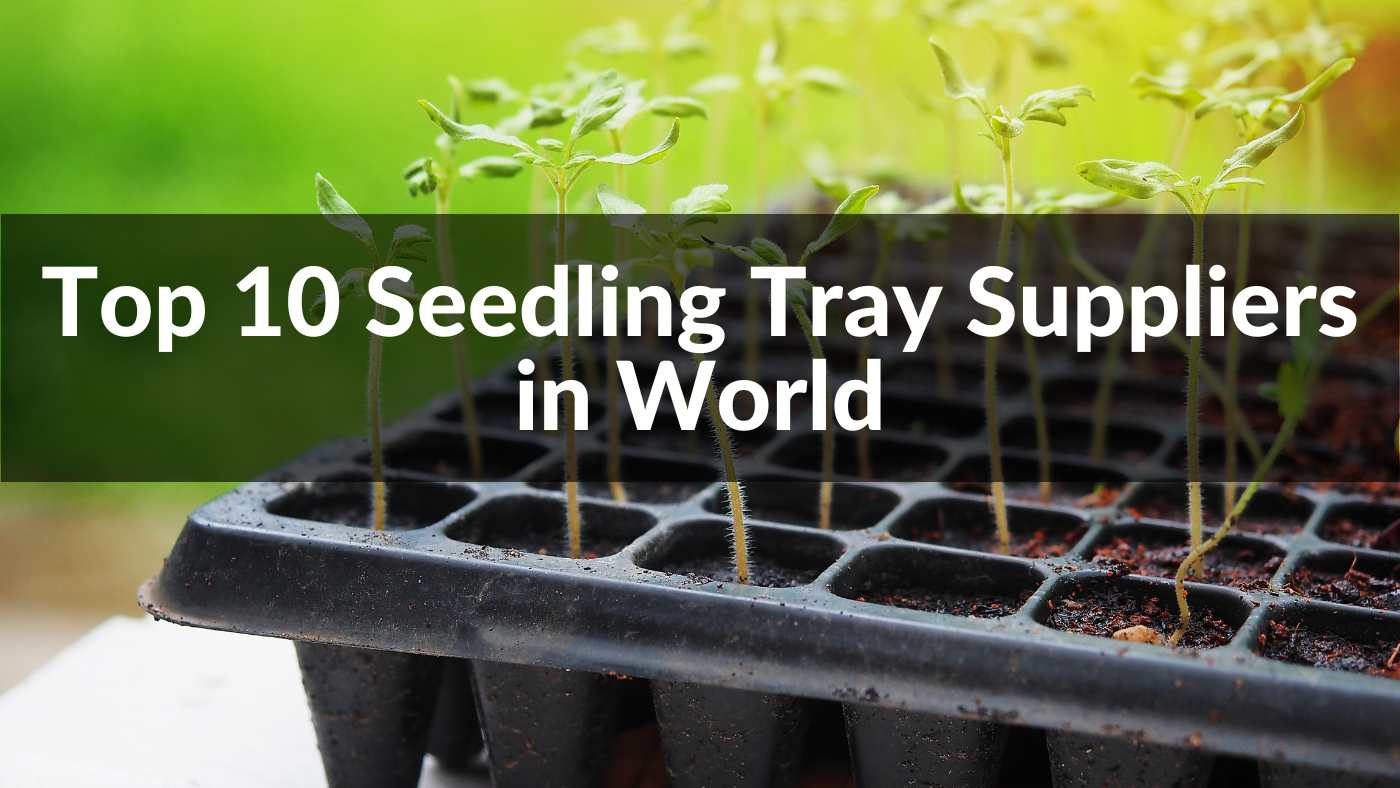
With the world of gardening evolving, fabric grow bags have surged in popularity as a versatile and effective solution for plant cultivation. Whether you're a novice green thumb or a seasoned horticulturist, understanding the intricacies of using these indoor growing containers can significantly boost your gardening game. This comprehensive guide delves into the world of fabric grow bags, shedding light on their benefits, applications, and how they stack up against traditional pots and buckets. Let's embark on this green journey together!
Fabric grow bags, often simply referred to as "grow bags," are a revolutionary solution in the realm of gardening. But what exactly are they? And why are they becoming so popular among both novice and seasoned gardeners alike?
At their core, fabric grow bags are containers made from a breathable fabric material, designed explicitly for facilitating plant growth. Unlike traditional pots, these bags offer a unique set of advantages that cater to a plant's health and well-being. The material used for these bags ensures better aeration, leading to healthier root systems. Think of it as giving your plants a breathable space to grow, much like how we prefer cotton clothing during hot summers.
Now, you might wonder, why choose fabric grow bags over the typical indoor growing containers or plastic pots? The answer lies in their unique design and material. The breathable fabric allows for superior root pruning. When roots reach the edge of the bag, instead of circling around as they would in a plastic pot, they undergo a process called "air pruning." This prevents the roots from getting entangled, ensuring that the plant doesn't become root-bound and remains healthy throughout its growth cycle.
Moreover, for businesses looking to expand their gardening solutions, fabric grow bags are a cost-effective and environmentally friendly choice. They are lightweight, easy to transport, and can be reused, reducing the carbon footprint compared to traditional pots. Not to mention, these bags have a certain aesthetic appeal that aligns with the current trend of sustainable living, making them an attractive choice for modern gardeners.
Fabric grow bags, while commonly grouped under one umbrella term, are made from a range of materials, each bringing its unique advantages to the table. When choosing a grow bag, it's essential to consider these materials and their benefits to make an informed decision for your plants. Let's explore some of the most common materials:
This is a popular choice for fabric grow bags. Non-woven polypropylene provides excellent breathability, which promotes healthier root systems. The material's porous nature ensures efficient drainage, reducing the chances of overwatering. Another bonus? It's durable and resistant to UV rays, making it an ideal choice for outdoor gardening.
Felt grow bags are revered for their durability and robustness. These bags provide ample aeration, promoting air pruning, and ensuring that plants don't become root-bound. Felt is also excellent at retaining moisture, making it a solid choice for plants that prefer consistently moist soil.
Burlap, or jute, is a natural fiber that's biodegradable. For those leaning towards organic or sustainable gardening, burlap grow bags are an excellent pick. They provide good aeration, promote healthy root systems, and have a rustic aesthetic appeal. However, they might not last as long as their synthetic counterparts, but their eco-friendliness is a significant trade-off for many gardeners.
Canvas bags are known for their strength and durability. Made from cotton, these bags are relatively more rigid, offering excellent support to plants. They are breathable, ensuring roots receive adequate oxygen. Moreover, being a natural fabric, canvas is also eco-friendly, aligning well with sustainable gardening practices.

Much like how every plant is unique in its growth patterns and needs, fabric grow bags come in a myriad of sizes to accommodate these varied requirements. The size of the grow bag not only influences the plant's immediate comfort but also its long-term health and productivity. Let's dive into the various size options and their typical applications:
Perfect for those just starting their gardening journey or with limited space. These bags are ideal for herbs, small flowers, and even some vegetables like lettuce or radishes. They're also great for transplanting seedlings or for those who wish to maintain a small plant size.
This size is the go-to for many gardeners. Suitable for larger plants, or those with deeper root systems, these bags can comfortably house tomatoes, cucumbers, and medium-sized shrubs. They're also a preferred choice for those wanting to grow a mix of plants in a single bag.
When you're thinking of growing larger vegetables like pumpkins or accommodating a small tree, these bags come into play. Their substantial size provides ample space for roots to spread, ensuring that the plants get all the nutrients they need.
For those ambitious gardening projects or when cultivating sizable plants and trees, extra-large grow bags are the way to go. Perfect for fruit trees, large shrubs, or even creating a mini garden bed, these bags offer immense flexibility and space for your plants to thrive.
With a plethora of planting options available, what makes fabric grow bags stand out? Why are they fast becoming the preferred choice for many gardening enthusiasts and professionals alike? Here, we'll unravel the benefits and reasons behind this rising trend.
One of the standout advantages of fabric grow bags is the promotion of robust and healthy root systems. Thanks to the fabric's breathable nature, when roots reach the edge of the bag, they undergo "air pruning." This means instead of spiraling and becoming entangled, the tips dry out, stimulating the plant to grow more roots. This process ensures that plants never become root-bound, leading to more vigorous and flourishing plants.
Breathability is a hallmark of fabric grow bags. The porous nature of the fabric ensures that the soil inside remains well-aerated. This allows the roots to breathe, ensuring they receive ample oxygen, which is essential for their growth and metabolism. Well-aerated soil also promotes beneficial microbial activity, enhancing soil health and plant growth.
Overwatering can be detrimental to plants, leading to root rot and other diseases. The design of fabric grow bags naturally combats this issue. Excess water easily drains out, ensuring that the soil maintains the right level of moisture. This feature not only prevents waterlogging but also encourages roots to grow deeper in search of moisture, further boosting their health and strength.
Fabric grow bags are incredibly lightweight and portable, making them a dream come true for those who love rearranging their gardens or moving plants based on sunlight requirements. They're also foldable, allowing for easy storage when not in use. For businesses, this means reduced storage costs and more straightforward logistics. For urban gardeners with limited space, grow bags offer the flexibility to set up a garden just about anywhere, from balconies to terraces.

The debate between using fabric grow bags and traditional plastic pots is not just a matter of style, but also functionality, sustainability, and plant health. Both have their own set of benefits, and understanding them can help gardeners make informed decisions.
Fabric grow bags, with their breathable design, offer significant advantages when it comes to root health and growth. The air-pruning effect ensures that roots don't get entangled, leading to a more robust root system. In contrast, roots in plastic pots often circle around, potentially restricting nutrient uptake and growth. This enhanced aeration also benefits the soil, encouraging beneficial microbial activity and allowing roots to breathe.
Water management is another area where fabric grow bags shine. Their design ensures optimal drainage, reducing the risks associated with overwatering. Plastic pots, unless specifically designed with multiple drainage holes, might retain more water, which can lead to waterlogged soil and root diseases.
However, when it comes to durability and longevity, the tables might turn slightly. While fabric grow bags are durable, especially the high-quality ones, they can degrade over time, especially if exposed to harsh weather conditions. Plastic pots, on the other hand, can last for many years, but prolonged exposure to sunlight can make them brittle, leading to cracks and breakage.
Environmental considerations also come into play. Fabric grow bags, particularly those crafted from natural materials, tend to have a softer environmental footprint as they break down over time. In contrast, plastic pots can contribute to the growing issue of plastic waste unless they are recycled.
In the grand scheme of things, the choice between fabric grow bags and plastic pots largely depends on a gardener's specific needs and values. Whether it's root health, sustainability, or longevity, understanding the nuances of both options can pave the way for a greener and more vibrant garden.
The world of gardening is replete with myriad methods and container options. Among these, fabric grow bags and buckets have stood out, each for their unique merits. But how do they stack up against each other, and which might be the best fit for your gardening needs? Let's dive into a comparative analysis.
At the forefront of their differences is breathability. Fabric grow bags, by design, are inherently breathable. This ensures that plants enjoy a well-aerated environment, promoting healthier root systems and preventing issues like root circling. Buckets, unless modified with holes, typically lack this level of breathability. This can sometimes result in roots becoming oxygen-deprived, which might stifle their growth.
Water drainage is another vital aspect to consider. Grow bags naturally excel at drainage due to their porous fabric, reducing the risk of overwatering and root rot. Buckets, on the other hand, can potentially retain more water, especially if not adequately designed for drainage. While buckets can be drilled with holes to improve this, it adds an extra step to the setup process.
In terms of durability, buckets, particularly those made of hard plastic or metal, can withstand harsher conditions and may last longer. However, this comes at the expense of environmental concerns, as plastic buckets contribute to plastic waste. Grow bags, while they may wear out faster, often have a softer environmental impact, especially those made from natural materials.
Mobility is another area where grow bags have an edge. They are generally lighter and easier to move, making them ideal for gardeners who like to rearrange their setups. Buckets, especially when filled with soil, can be cumbersome and challenging to relocate.
Lastly, aesthetics might play a role for some gardeners. Grow bags, with their modern and streamlined appearance, can seamlessly fit into various garden designs. Buckets, while functional, may lack this aesthetic appeal unless they are painted or decorated.

Embarking on a gardening venture with fabric grow bags? Exciting times lie ahead! These breathable containers have taken the gardening world by storm, offering an array of benefits. But to truly harness their potential, it's crucial to start on the right foot. Here's a step-by-step guide to set you off in the right direction.
Size matters, especially when it comes to ensuring your plants have adequate space to thrive. Consider the mature size of your plant; a small herb might be content in a 1-3 gallon bag, but larger vegetables or shrubs will demand more space. As a rule of thumb, always err on the side of slightly larger than you think you might need to accommodate robust root growth and ensure there's enough soil to retain moisture.
The right soil mixture can make all the difference in plant health and yield. For fabric grow bags, a well-draining potting mix is essential. Consider combining peat, pine bark, and perlite or vermiculite in equal measures. This ensures good aeration while retaining sufficient moisture. Depending on the plant's nutritional requirements, you might also want to enrich the mix with compost or a slow-release fertilizer.
One of the beauties of fabric grow bags is their portability, allowing you to place them in optimal sunlight conditions. However, it's essential to understand the sun requirements of your specific plants. While some plants relish full sun, others might prefer partial shade. Use the mobility of grow bags to your advantage, repositioning them as the seasons change to ensure your plants always get the light they need.
Planting in fabric grow bags isn't just about placing a plant inside and hoping for the best. It's an art combined with a tad bit of science, ensuring your plants have the ideal environment to thrive. Here's a systematic guide to ensure your plants get the best start in their new fabric homes.
Begin by filling your grow bag with a suitable potting mix. Ensure the soil is loose and not compacted. Fill it up to about 2 inches from the top, providing ample space for root expansion and accommodating the plant. The soil should be well-aerated, so consider a mix that incorporates perlite or vermiculite.
Once your grow bag is filled, create a hole in the center for your plant. The size and depth of this hole should be slightly larger than the root ball of the plant you're introducing. This ensures that the roots can spread out comfortably and establish themselves.
Gently place your plant into the hole, ensuring the roots are well-spread and not tangled. Fill around the plant with the remaining soil, pressing down gently to secure the plant in place. Ensure the plant is upright and firmly embedded, but avoid compacting the soil too much.
Watering in fabric grow bags can be slightly different from traditional pots. Due to their porous nature, they might dry out faster. Start by watering the plant thoroughly after planting. In the future, monitor the soil's moisture levels regularly and water when the top inch feels dry. It's crucial to provide deep and infrequent watering rather than shallow and frequent sessions, ensuring roots grow deep and strong. Remember, while fabric grow bags offer excellent drainage, it's still essential to avoid overwatering. Excessively damp conditions can lead to root rot and other fungal issues.

While fabric grow bags offer a fantastic environment for plants, ongoing care is essential to ensure they truly flourish. From soil monitoring to protection against pests, here's a comprehensive guide to nurture your green companions.
Consistent moisture levels are paramount. As fabric grow bags provide excellent drainage and are breathable, the soil may dry out faster than in traditional pots. Regularly check the soil's moisture by feeling the top inch. If it's dry, it's time to water. Remember, it's better to water deeply and less frequently to encourage robust root growth.
Over time, plants deplete the nutrients in the soil. To ensure they have a constant supply, incorporate a balanced, slow-release fertilizer into the soil. Depending on the plants you're growing, you might need to adjust the nutrient levels. For instance, flowering plants might benefit from a higher phosphorus content, while leafy greens might prefer more nitrogen. It's also a good practice to periodically check the soil's pH and adjust accordingly.
Regular pruning not only keeps plants looking their best but also ensures healthy growth. Remove dead or yellowing leaves to allow for new growth. For flowering plants, deadheading or removing spent flowers can encourage more blooms. Also, if you notice your plant outgrowing its space, consider transplanting it to a larger grow bag.
While fabric grow bags can reduce some issues like fungal diseases due to their breathability, plants aren't immune to pests and diseases. Regularly inspect your plants for signs of pests like aphids, spider mites, or caterpillars. Natural remedies, like neem oil or insecticidal soap, can be effective treatments. To prevent diseases, ensure good air circulation around your plants and avoid overhead watering, which can leave foliage damp and prone to fungal infections.
Gardening is as much about timing as it is about technique. As the seasons change, so do the needs of our plants. When using fabric grow bags, certain seasonal considerations can optimize plant health and yield. Here's a guide tailored to address these shifting requirements throughout the year.
Winter can be challenging, especially for plants in fabric grow bags. The lack of insulation from the cold ground can make the roots more vulnerable to freezing. Consider moving your grow bags to a sheltered location, close to the house, or in a greenhouse. Mulching the top of the soil can also provide an added layer of insulation. If extremely low temperatures are predicted, wrapping the grow bags in burlap or using specialized plant blankets can help protect against frost.
The sun-drenched days of summer bring warmth, but they can also lead to rapid soil drying, especially in breathable fabric grow bags. During peak summer, you might find the need to water more frequently. It's essential to monitor the soil moisture closely. Early morning or late evening watering can be more effective as it reduces evaporation, ensuring that plants have adequate water to last through the heat of the day.
The mobility of fabric grow bags is a boon when adjusting to seasonal light changes. In spring and summer, plants typically require more sunlight, so placing them in a location where they can receive 6-8 hours of direct sunlight is ideal. As autumn approaches, the sunlight wanes. Some plants might benefit from being moved to a brighter location to maximize light exposure. Conversely, during intense summer heat, partial afternoon shade might be beneficial for some plants, preventing them from getting scorched.
For the seasoned gardener looking to maximize the potential of fabric grow bags, there are a myriad of advanced techniques and strategies to consider. Let's uncover some of these nuanced approaches to elevate your gardening game.
Climbing plants or those that benefit from vertical support can thrive in fabric grow bags with the aid of trellises. When setting up a trellis, ensure it's securely anchored. You can place the trellis directly in the grow bag or position it behind, tying the plant to the trellis as it grows. This not only optimizes space but also promotes better air circulation and exposure to sunlight, leading to healthier plants and improved yields.
Companion planting, the art of growing plants that benefit each other in close proximity, can be effectively executed in larger fabric grow bags. For instance, tomatoes, basil, and marigolds are a classic trio that supports each other's growth and deters pests. Another advanced technique is layering, where plants with varying root depths are planted together, allowing them to utilize different soil levels without competing for nutrients.
After a growing season, the soil in your fabric grow bags might seem spent. But don't be too quick to discard it! This soil can be revitalized. Begin by removing old roots and plant matter. Then, mix the old soil with fresh compost or well-decomposed manure to replenish nutrients. You can also add some perlite or vermiculite to enhance aeration. This recycled mix can serve as a robust medium for another round of planting, ensuring sustainability and reducing waste.

Gardening is a rewarding endeavor, but like all pursuits, it comes with its fair share of challenges. When using fabric grow bags, certain issues might arise. However, with a little know-how, these can be addressed effectively. Let's delve into some common challenges and their solutions.
The breathable nature of fabric grow bags, while beneficial in many ways, can sometimes lead to the formation of mold and mildew on the exterior, especially in humid conditions. To combat this:
While fabric grow bags significantly reduce the chances of plants becoming root-bound, it's not entirely foolproof. If you notice a dense mat of roots growing in circles at the bag's base, it's time to act:
Seeing plants droop or wilt can be disheartening. This can be due to various reasons, from overwatering to nutrient deficiencies. Here's how to address it:
Every challenge in gardening is an opportunity to learn and adapt. With these solutions in hand, you'll be well-equipped to tackle any issue that comes your way, ensuring your plants remain healthy and vibrant.
Whether you're a retailer looking to stock up on quality fabric grow bags or a large-scale gardener seeking reliable supplies, selecting the right manufacturer is paramount. The market is awash with numerous manufacturers, making the choice overwhelming. Here's a step-by-step approach to ensure you partner with the best.
Begin by examining the quality of fabric used. High-quality fabric bags should be durable, breathable, and resistant to UV rays. Check if the manufacturer uses BPA-free materials, ensuring the safety of the plants and the end consumers.
A manufacturer's reputation can speak volumes. Look for reviews, testimonials, or case studies. Established manufacturers often have a track record that can be verified through client feedback and ratings.
A diverse product range can be indicative of a manufacturer's expertise and scale. Check if they offer various sizes, colors, and customizations. This not only caters to a wider audience but also indicates their flexibility and adaptability to market needs.
While it's tempting to opt for the most cost-effective option, it's essential to assess the value offered. A slightly higher-priced product that's durable and superior in quality can offer better long-term value than a cheaper, inferior product.
Post-sale support is crucial. Assess how approachable and responsive the manufacturer is to inquiries, complaints, or feedback. A manufacturer committed to customer satisfaction will typically have robust customer support mechanisms in place.
Ensure the manufacturer adheres to industry standards and has relevant certifications. This not only ensures product safety but also reflects their commitment to quality and industry best practices.
Navigating the world of gardening can be both rewarding and challenging. Fabric grow bags, with their myriad advantages, offer a fantastic tool for gardeners to harness. As with all tools, the key lies in knowing how to utilize them effectively. With the insights from this guide, you're now equipped to make the most of these innovative containers. For those looking to further elevate their gardening ventures, Linkwin, a leading manufacturer of garden tools and fabric grow bags, offers an extensive range of top-tier products and solutions to cater to every gardening need. Explore a world of quality and innovation with Linkwin today!











We use cookies to make the website work, to provide advanced features, social media and traffic analysis, and we use analytics and third-party advertising cookies. If you choose to click "Deny All", you will retain the default setting of not allowing the use of cookies or other tracking tools other than technical tools.

